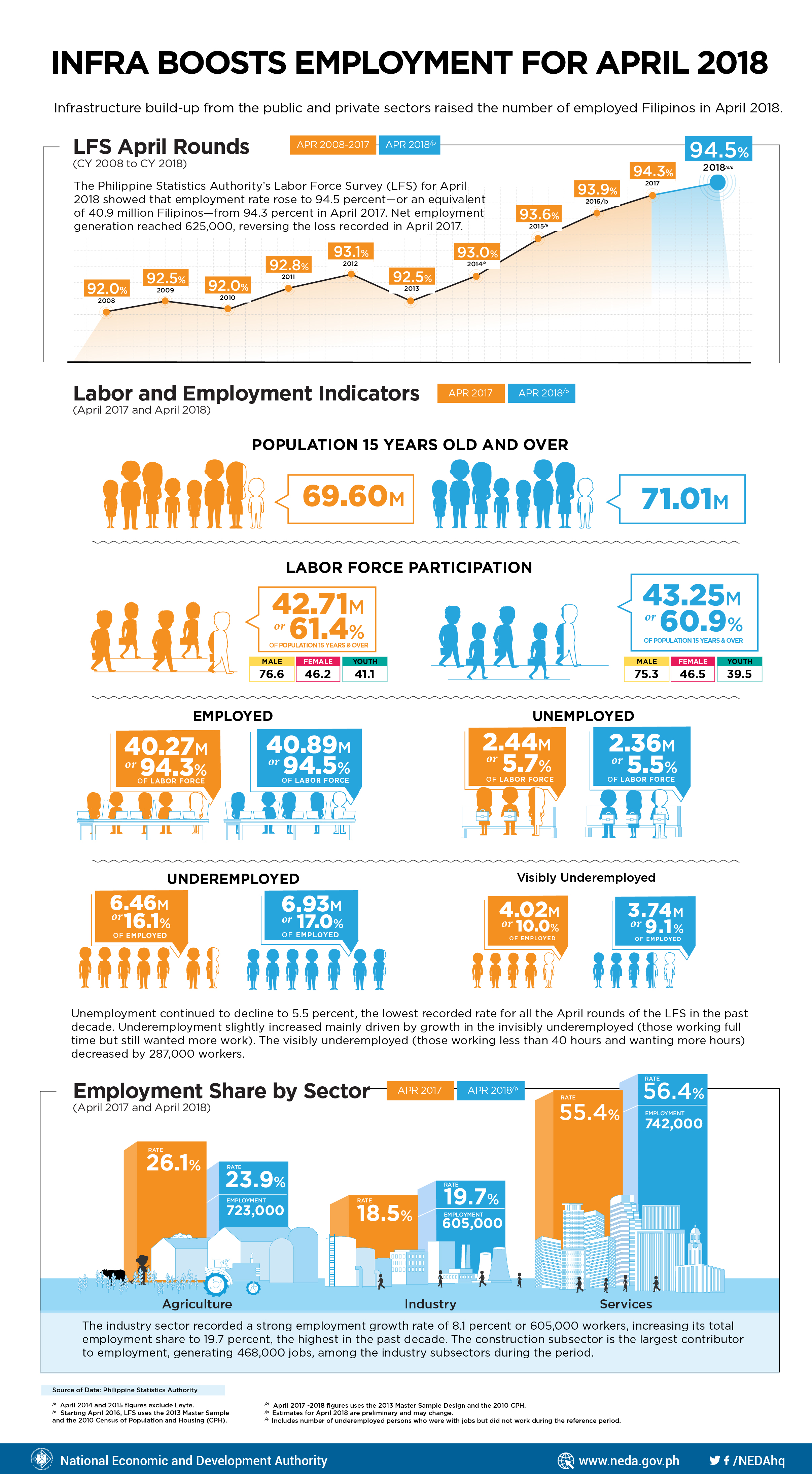June 05, 2018
Infrastructure build-up from both the public and private sectors has helped boost the number of Filipinos with jobs in April 2018, the National Economic and Development Authority said.
The Philippine Statistics Authority’s Labor Force Survey (LFS) for April 2018 showed that employment rate rose to 94.5 percent—or an equivalent of 40.9 million Filipinos—from 94.3 percent in April 2017 (equivalent to 40.2 million Filipinos with jobs). Net employment generation reached 625,000, reversing the loss recorded in April 2017.
“Employment grew partly due to increased infrastructure spending as the Department of Public Works and Highways’ road projects and rehabilitation of public school facilities are already underway nationwide,” NEDA Officer-in-Charge (OIC) and Undersecretary Jose Miguel R. de la Rosa said.
The industry sector recorded a strong employment growth rate of 8.1 percent or 605,000 workers, increasing its total employment share to 19.7 percent, the largest in the past decade. The construction subsector is the biggest contributor to employment, generating 468,000 jobs, among the industry subsectors during the period.
“We are now seeing the contribution of the Build, Build, Build campaign in terms of job generation. We can expect the demand for workers in the sector to grow further as more projects break ground,” de la Rosa added.
Meanwhile, unemployment continued to decline to 5.5 percent, the lowest recorded rate for all the April rounds of the LFS in the past decade.
However, youth unemployment remained high despite improving to 13.8 percent, which is also the lowest in the past decade.
“We must continue to foster stronger linkages between employers, the academe, and the government to ease access to employment information and opportunities,” de la Rosa said.
Also, underemployment, referring to those employed but wanting more work, increased to 17.0 percent or 6.9 million workers in April 2018, compared to 16.1 percent or about 6.5 million underemployed workers in the same period last year.
This is mainly driven by the increase of those employed fulltime but wanting more work by 30.8 percent, or approximately 752,000 workers. Still, other aspects of quality of employment significantly improved such as wage and salary employment, full time employment and mean hours of work.
“In order for us to achieve our employment targets, reforms in market regulations and tackling structural barriers are important to facilitate the creation of new businesses and to boost the outputs of firms. These may translate to high-productivity jobs,” de la Rosa said.
He explained that apart from the recently passed Ease of Doing Business Act, other key reforms should be pursued to improve the labor market. These include the reduction of foreign investment restrictions and package 2 of the Tax Reform Program, which will lower corporate taxes while rationalizing investment incentives.
He added that ramping up the government’s Build, Build, Build program will sustain the country’s employment growth.
De la Rosa is OIC of NEDA while Socioeconomic Planning Secretary Ernesto M. Pernia is in Korea as part of President Rodrigo R. Duterte’s visiting high-level delegation to the peninsula.
–END–




